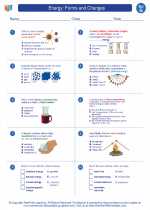Sol: Explanation and Study Guide
What is Sol?
Sol is a colloidal suspension of solid particles in a liquid. It is a type of mixture where the solid particles are finely dispersed throughout the liquid, but do not settle out. Sol particles are typically larger than those found in a solution, but smaller than those found in a suspension.
Characteristics of Sol:
- Colloidal in nature
- Opaque appearance
- Particles do not settle out
- Stable over time
Examples of Sol:
Some common examples of sol include paint, ink, and muddy water. These substances exhibit the characteristic properties of sol and can be studied to understand its behavior and properties.
Properties of Sol:
Some important properties of sol include:
- Brownian Motion: Sol particles exhibit Brownian motion, a random movement caused by the constant bombardment of particles by the molecules of the solvent.
- Opalescence: Sol particles can scatter light, giving sols an opalescent appearance.
- Stability: Sol particles remain dispersed and do not settle out over time, leading to the stability of sols.
Applications of Sol:
Sols are used in various industrial and scientific applications, including in the production of paints, inks, and ceramics. They also have applications in biological and medical fields for drug delivery and imaging techniques.
Study Guide:
Here are some key points to focus on while studying sol:
- Understand the colloidal nature of sol and how it differs from other types of mixtures.
- Learn about the properties and behavior of sol particles, including Brownian motion and opalescence.
- Explore the applications of sol in different industries and scientific fields.
- Practice identifying sols in everyday substances and understanding their stability and behavior.
[Sol] Related Worksheets and Study Guides:
.◂Science Worksheets and Study Guides Seventh Grade. Energy: Forms and Changes

 Worksheet/Answer key
Worksheet/Answer key
 Worksheet/Answer key
Worksheet/Answer key
 Vocabulary/Answer key
Vocabulary/Answer key
 Vocabulary/Answer key
Vocabulary/Answer key
 Vocabulary/Answer key
Vocabulary/Answer key
